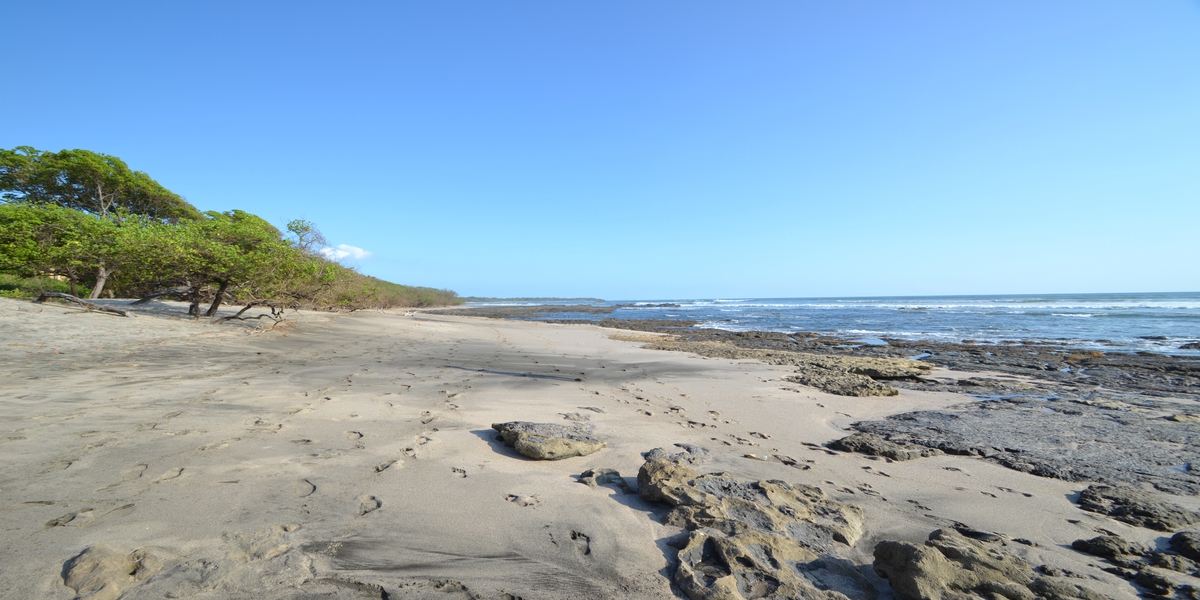 2021 is a Great Time to Travel to Costa Rica
2021 is a Great Time to Travel to Costa Rica
Now that the worst of the pandemic is behind us, Costa Rica is a great place to satisfy your long-delayed wanderlust. Between its two coastlines on the Caribbean and Pacific, it offers everything from cloud forests to rushing rivers to tropical jungles to pristine beaches. Everywhere you turn, it’s brimming with wildlife. According to the Costa Rican Embassy website, it is home to 6% of the world’s biodiversity while covering just 0.03% of the land area. The government has designated 25% of the country as a national park or reserve, so it’s likely to maintain its natural state for years to come. And Costa Rica’s easygoing, pura vida ("pure life") vibe means you can enjoy the variety at your own pace.
COVID-19 Travel Restrictions and Requirements are eased
Current COVID-19 travel restrictions: According to Costa Rica's official tourism website travelers do not require proof of vaccination or a negative coronavirus test to enter the country, and it doesn’t have a quarantine policy either. However, visitors must fill out a report called the Digital Health Pass 48 hours before boarding their inbound flight. An additional requirement is travel health insurance that covers at least $50,000 worth of medical expenses and $2,000 in lodging expenses in case of Covid infection.
The Current Covid-19 situation in Costa Rica
The most recent wave was the worst of the pandemic, and the peak was reached in mid-May. Since then, the trend has been downward and is currently about 60% of the peak. Restrictions are in effect for travel within the country, but rental cars, taxis, and buses are exempted, so it’s not difficult to get around.
How to Get to Costa Rica?
Costa Rica boasts two international airports: Juan Santamaría International Airport (SJO) is located near the capital San Jose. It’s midway between the wild Caribbean coast and the popular Central Pacific beach towns. Daniel Oduber Quirós International Airport (LIR) in Guanacaste province is within a one-hour drive of the famous beach and surf towns of the northwest Pacific coast. Twelve U.S. cities are connected by nonstop flights, and major airlines offer connecting flights to hundreds of other cities.
Everything is Open but here are some Top Destinations
Playa Tamarindo
The 1994 classic surf movie “Endless Summer II” put Tamarindo on the map. Since then, thousands have experienced its unique charm. The waves are just the right size for novice surfers, and nearby surf shops offer board rentals and lessons. But Tamarindo offers so much more than surfing. The dusty surf town of the 1990s has become one of the most developed Pacific communities in Costa Rica. The scenic white sand beach is perfect for strolling, and there are plenty of shops, restaurants, and bars along the way to satisfy any desire. Tamarindo’s northern neighbor, Playa Grande, is a favorite of advanced surfers and turtle watchers. Each year, hundreds of giant leatherback turtles return to lay their eggs in holes they dig in the sand. Guided tours are available at night in the nesting season.
A little farther north, Playa Flamingo is a beautiful sandy crescent with an imposing headland at each end. Just sit in the shade and let the endless string of perfectly formed waves lull you to sleep. Or, head to the newly built marina for fishing or a snorkeling tour. When night falls, try one of the ocean view restaurants perched on the northern headland. If your idea of a vacation is getting away from it all, Playa Avellanas is calling you. It’s about 30 minutes south of Tamarindo, but it feels like a world away. There you will experience natural beauty and solitude.
Arenal Volcano
If you painted a picture of a perfectly formed volcano, it would look like Arenal. The area surrounding the picturesque cone offers great hiking and riding (bike or horse). Other adventure activities are ziplining, whitewater rafting, and rappelling down a waterfall. More relaxing activities include touring a coffee or chocolate farm. Or walk the hanging bridges through the canopy of the rainforest to get a bird’s eye view of the monkeys and sloths. Plentiful thermal springs draw many visitors to the area. Some hotels have their own hot water pools for soaking in the mineral-laden waters.
Lodging begins in La Fortuna, the largest town in the area and a great base from which to begin your adventure, especially if you don’t rent a car. Lodging choices extend along the road that partially encircles the base of the volcano and ends at Arenal Lake. You find everything from rustic cabins made of locally milled wood to luxurious resorts with gourmet restaurants.
Manuel Antonio National Park
Located on the central Pacific coast, this national park combines the beach and the rainforest. It’s a great place to see sloths, both two-and three-toed, and four species of monkeys: white-faced, squirrel, spider, and howler. Frogs, iguanas, and more than 350 species of birds make their home there. Guides are available to help you spot all the little creatures hidden in the lush vegetation. The park is closed on Mondays, and the number of visitors is limited on other days to prevent overcrowding that could be harmful to the flora and fauna.
Just outside the park, you’ll find Espadilla Beach where parasailers begin their scenic flight. It’s also a great place to relax under a beach umbrella. Damas Island Estuary is about 20 minutes drive north. Take a seat on a motorized boat or paddle your own kayak to see all sorts of wildlife both in and above the water.
Marino Ballena National Park is about an hour south of Manuel Antonio. Ballena is Spanish for whale, and the marine park is the most likely place in Costa Rica to see a humpback whale. Prime viewing time to see the migrating behemoths is between mid-July and October, and again from December through March.
Monteverde
The Monteverde community was settled by a group of Quakers from Alabama in the 1950s. They wanted a tranquil place to practice their pacifist lifestyle, and they found it in an isolated section of Costa Rica’s central mountain range. They reserved a large portion of the mountainside to protect their water source and, in so doing, protected an abundance of wildlife. The conservation area became the world-famous Monteverde Cloud Forest Reserve, home to the elusive resplendent quetzal. This shimmering emerald bird with a ruby-colored breast and flowing tail feathers is worthy of its name - resplendent. Hundreds of other bird and mammal species inhabit the four ecosystems that comprise Monteverde. The towering trees, draped with vines and bromeliads and enshrouded in mist, give the cloud forest an otherworldly feel. Numerous lodges, eco-resorts, and hotels let you sleep in or near the cloud forest.
This brief overview is just a glimpse of the myriad of adventures that await you in Costa Rica. These and many other popular destinations are just a few hours drive from one another. Costa Rica may be small geographically, but it’s huge when it comes to variety and fun. And it’s only a few hours by plane from North America. Now that the pandemic is waning, wouldn’t this be a great time to experience Costa Rica?






